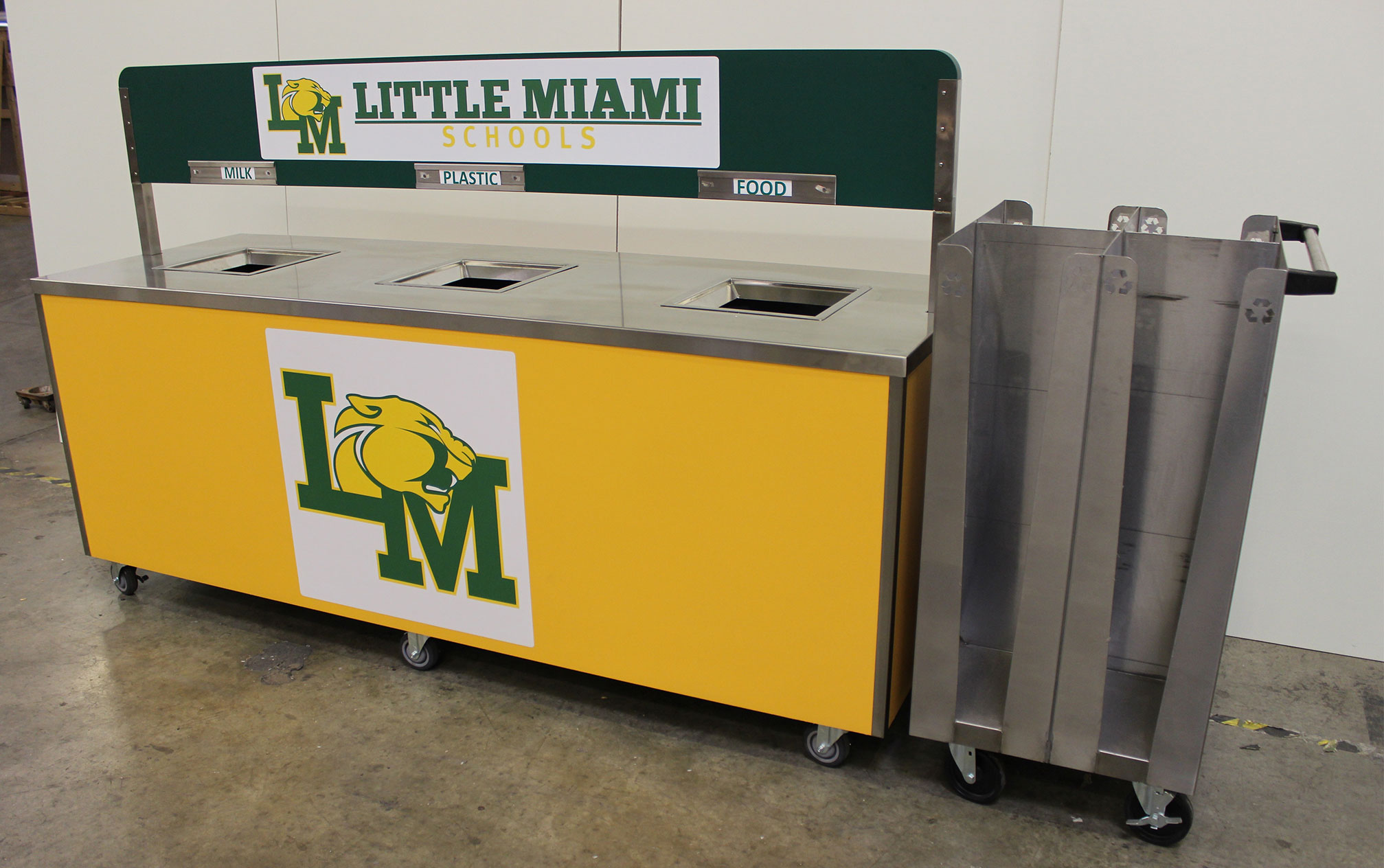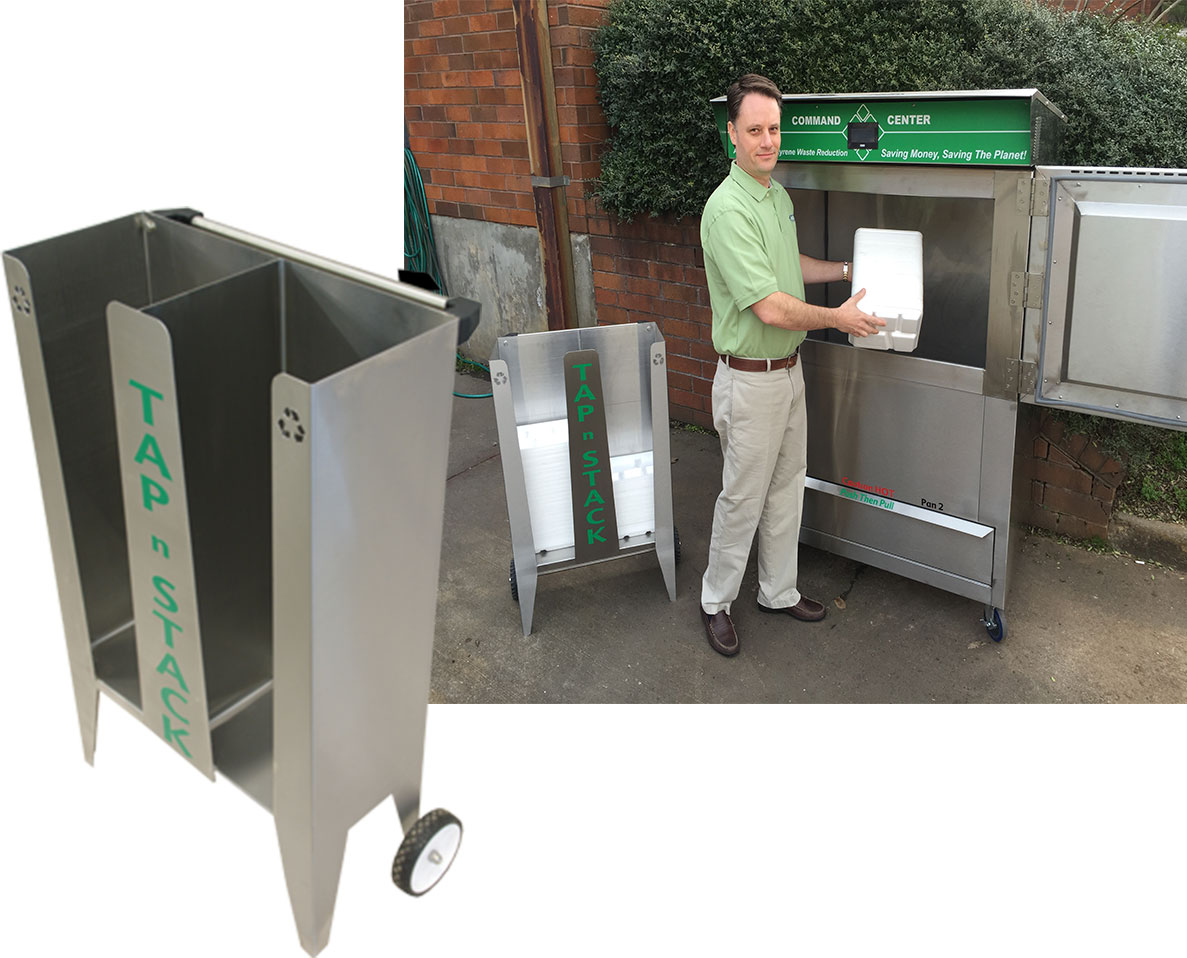
Source Separation
Waste Collection Systems
Foodservice Sustainability Solutions offers an array of standard and custom Innovative Source Separation Waste Collection Systems, which creates student learning and participation, integrates best practice waste diversion features, reduces staff workload, and are proven to increase recycling and heighten environmental awareness in any school or organization.


Source Separation
We offer multi-stream recycling collection solutions. Source separation is a contributor to achieving and empowering zero waste.
Waste separation is essential for waste to be managed in a more efficient and sustainable manner. When waste is separated before it is thrown away, material that can be recycled is not polluted by other waste. In this way, the material collected is cleaner, making it possible to process into high quality recycled products.
Tap & Stack SmartCart was designed for the collection of polystyrene foam trays. It can be added to any source separation stream.
The Smartcart conveniently transports polystrene foam trays to a StyroGenie a low cost, thermal densification machine.

US Green Building Council Characteristics of a Green School
Foodservice Sustainability Solutions waste reduction and recycling programs for polystyrene foam and food waste address 8 of the 13.
1. Conserves energy and natural resources (less fossil fuel, no dishwasher/water)
2. Saves taxpayer money (saves waste removal cost, no need for high cost alternative products)
3. Improves indoor air quality
4. Removes toxic materials from places where children learn and play
5. Employs day lighting strategies and improves classroom acoustics
6. Employs sustainable purchasing and green cleaning practices
7. Improves environmental literacy (educational tool, S.T.E.M. programs, Green Teams)
8. Decreases the burden on municipal water and wastewater treatment (No Dishwashing)
9. Encourages waste management efforts to benefit the local community & region (100% landfill diversion)
10. Conserves fresh drinking water
11. Encourages recycling (100% of waste is recycled)
12. Promotes habitat protection
13. Reduces demand on local landfills (100% diversion, recycling, resource recovery)
